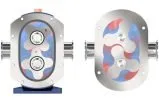There are two primary types of businesses, B2B and B2C. B2C businesses sell products to consumers while B2B businesses sell products to other businesses. They tend to sell wholesale products or industrial or technical products that are designed for specialized purposes.
There’s not much difference between B2B and B2C in terms of the marketing strategies used, however, a different approach should be integrated depending on the type of business you run. For example, product videos can be used in both B2B and B2C applications, but each should be created with varying characteristics that will help them appeal to their target audience.
The article will focus on B2B product videos, and the direction companies should be taking when creating them.
How Do B2B Product Videos Differ from B2C Product Videos?
B2B product videos are videos used to sell a product from one business to another. They tend to be more detailed than other types of product videos because they are likely to include technical aspects of the product that need to be explained in detail.
They differ from B2C videos which have more of a lifestyle vibe and are generally shorter. B2B videos, on the other hand, go more in-depth and appeal to an audience that is knowledgeable in the industry.
How are B2B Videos Integrated into Marketing Campaigns?
The videos can be used in a variety of applications including the following:
- Sales Presentations: Sales presentations often integrate product videos. The company that’s selling the item will sit down with their prospective clients to explain how the product works and what problems it can solve. They fully educate the clients in hopes it leads to a conversion.
- Emails or Newsletters: A B2B video can also be embedded into an email or newsletter letting the client know about a new or existing product that is suited to the company’s needs.
- Social Media: A product video may be included on the company’s social media to work as marketing material. When included on a social media platform, the company may consider cutting the video down as a person coming across it on the internet may not have a lot of time to invest in watching it. They may also need to reformat it in accordance with the site requirements.
- Landing Pages: A landing page is a standalone page that’s separate from the company’s main website. It’s often the location people click through to off an ad. It should work to engage the customer so they want to find out more about the company and it will allow them to access the website from the page. A product video placed on a landing page will effectively draw customers in.
- Websites: A product video can also be included on any of the pages of the company website. When featured on the website, it can be a bit longer and go more in-depth. This is because people that are watching the video on the website may be further down the funnel and may require more information on the product.
What Benefits Does a B2B Product Video Provide?
B2B product videos offer a variety of benefits including the following:
- They Make Sales Presentations More Engaging: Product videos bring life to potentially boring sales presentations making it more engaging.
- They Boost Conversions: Product videos are a good way to fully communicate how the product works and the solutions and benefits it can provide. Once a business learns what the product offers, they will be more likely to invest.
- They Allow You to Go Back and Forth Between Slides: A 3D animated video will be particularly effective as most have markers that you can access to start the video at a certain point and clearly explain details that may have been missed.
- They Produce a High ROI: Product videos boost conversions so they will be well worth the investment. They can be used on a variety of platforms, so they give you even more bang for your buck. Studies show that companies that use video in marketing campaigns can grow their revenue 49% faster than those who don’t.
- They Bring Quality Traffic to Your Website: Videos keep people on your website longer. This sends an alert to Google letting the search engine know that your site contains valuable content. This, in turn, increases your website ranking bringing in even more traffic.
- They Influence Buyer Decisions: Videos provide digestible information that promotes transparency. A survey conducted by Animoto revealed that 935 of consumers say video is helpful when buying a product. 71% have purchased a product after watching a product video on social media.
Now that you know more about B2B product videos, you can decide the approach you want to take when creating your media. Which direction do you think will be most effective when it comes to reaching your target audience?









Recent Comments